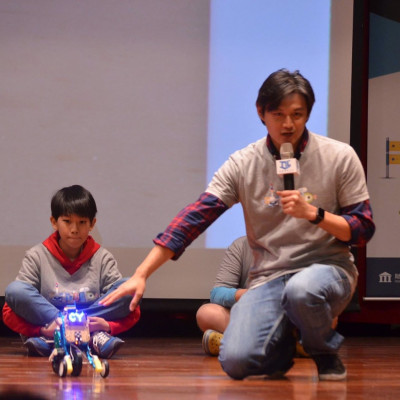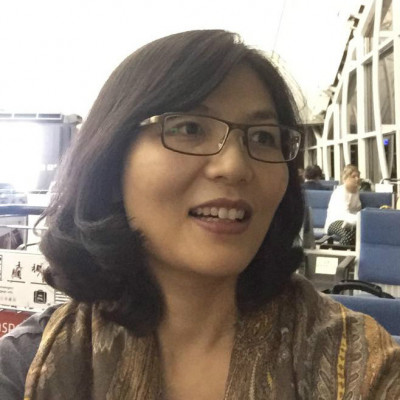Sessions / Bilingual Centers
A preliminary study on developing bilingual classroom assessment #2524
The study draws upon a conceptual framework of the three assessment approaches (assessment of/for/as learning) and a five-phase cycle of bilingual classroom assessment that subsumes (1) planning assessment, (2) collecting and organizing assessment information, (3) interpreting assessment information and providing feedback, (4) evaluating and reporting assessment information, and (5) taking action on the assessment results. Within this framework, the purpose of the study is to develop five modules of bilingual classroom assessment across the bilingual curricular on the arts, the health and physical education areas, cross-area project, and the using English as a medium of instruction in the English subject (i.e., the EMI). By the design-based research approach, the study investigated how the bilingual classroom assessment practices were contextualized and developed with foci on the lesson planning, the instruction implementation, and post-lesson reflections from the teachers’ perspectives. Data-collection techniques included via interviews, lesson co-planning notes, lesson observation notes, students’ worksheets and assessments, and the teachers’ post-lesson reflections. Five secondary schools (4 junior high schools, 1 senior high school) and 7 teachers (3 English teachers, and 4 content area teachers) partook in the study. Preliminary findings revealed the five assessment modules that detail why, what, how, and so what of the assessment, alongside a succinct lesson plan of a unit (a range of 3 to 16 class periods). In terms of post-lesson reflections, content-area teachers emphasized the importance of aligning classroom participation and English learning targets with the assessment tasks, so as to facilitate the dual-focused learning of Grades 7 and 8 students in bilingual classrooms. In terms of EMI, English-subject teachers indicated a need to set fewer learning targets as well as to slower the instructional pacing, so as to guide the self-directed English learning of Grade 7 students. The study delineates the implications of bilingual classroom assessment.
How can we add more value to bilingual PE lessons? Variability of practice is critical in quality physical activity for children #2558
Since the Bilingual living environment has become a vital national policy, county and city government and research centers have conducted research and develop teaching materials to achieve the main goal. In recent years, more subjects have been putting effort into learning through foreign languages. Physical Education (PE) is often the subject chosen for applying multilingual initiatives based on content and language integrated learning (CLIL). CLIL provides students with enhanced opportunities to acquire skills and knowledge in additional languages, while learning a variety of subjects. Student can learn a second language through daily life and natural patterns, since Physical Education is taught in English. How can we add more value to bilingual PE lessons, not just motor skill development and language, but also achieve competency? Variability of practice is critical in quality physical activity for children, and it increases the formative value of physical activities. The textbook of Taipei municipal for PE covers new curriculum, provides a work plan, and explains how to plan PE-in-CLIL units and lessons. In the text book, we consider the beneficial effect of PA level, motor development, and variability of practice to develop competencies with international perspective and cultivate a new generation of citizens.
Teaching Young Learners Mathematics: A CLIL Approach #2520
As literature indicates, it can be argued that mathematics is a language because it has its own set of rules, and with a finite number of symbols an infinite number of utterances can be created. Students need to master this language in order to read, understand, write down, and discuss ideas. In a CLIL lesson, both the learning of mathematics concept and the simultaneous learning of a second or foreign language is emphasized. This present paper will examine the following two aspects: How to scaffold young learners to process the mathematics concept through a second language? How to guide young learners to learn the mathematics language?
Elementary School CLIL Teacher’s Target Language Competence and Pedagogical Knowledge #2521
The promotion and practice of bilingual education in Taiwan are sometimes met with doubts and even resistance from classroom teachers, and one major reason is the lack of confidence in their target language competence in teaching CLIL lessons. This presentation will argue that a CEFR minded rhetoric about bilingual teachers’ target language competence requirement actually does a disservice in the promotion of bilingual education. I will discuss different aspects of bilingual teachers’ target language competencies, and provide suggestions for teacher preparation institutes and government agencies to better support teacher’s professional development in this respect.
The development of elementary Life Curriculum bilingual teaching materials #2522
Wenzao University of Languages has established a bilingual research center since 2018. One of its tasks is to design bilingual teaching materials for elementary courses, including integrative activities learning area, Life Curriculum, and PE. In this presentation, bilingual teaching materials for Life Curriculum will be discussed. This year, the Wenzao team has completed four Life Curriculum bilingual materials. These teaching materials are to serve as a tool and reference book for teachers, not only English teachers, who want to plan and design bilingual lessons. The content of the books follows the Chinese textbooks. The one presented in this presentation is book 1 (first grade). There are 6 units, and each consists of 5 basic components, namely course introduction, words and phrases, sentence patterns, teaching procedure, and content explanation. During the developing process, we consulted with native English speakers for language usage and wording. We also tested out the content in elementary classes. In-service teachers also gave us feedback regarding the organization, content and language use. Modifications were made accordingly. We hope that this set of books can be a handy and useful tool for elementary bilingual teachers.
Vocabulary Demand for Science Curriculum #2634
This study is a lexical analysis of spoken discourse supporting vocabulary development for English as a foreign language students who are learning science in English. The study analyzed bilingual science lesson from grade 4-6 grade, a lesson from each grade level. The AntWordProfiler was used to analyze the transcripts of the lessons. AntWordProfiler is a “freeware tool for profiling the vocabulary level and complexity of text” (Anthony, 2014, n,p.) that lists the words that occur in a text according to their frequency. Naiton’s (2006) BNC word family list of fourteen 1,000 word lists were used with AntWordProfiler software to show the percentage lexical coverage of the 14 groups of 1,000 words at which the words in the science lessons occurred. The study shows that L2 learners need to know 4000-5000 word families to understand 95% of the words in science lessons.





